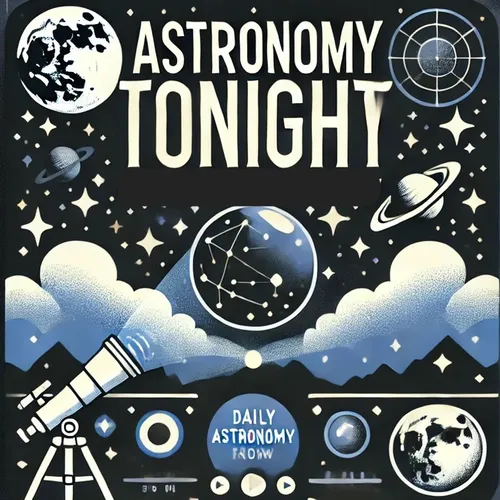Astronomy Tonight for - 11-28-2024
- Author
- Inception Point Ai
- Published
- Thu 28 Nov 2024
- Episode Link
- https://www.spreaker.com/episode/astronomy-tonight-for-11-28-2024--63044810
On November 28, 1967, astronomers Jocelyn Bell Burnell and Antony Hewish made a groundbreaking discovery that would revolutionize our understanding of the universe: they detected the first pulsar!
Picture this: It's a chilly autumn day in Cambridge, England. A young graduate student named Jocelyn Bell is poring over reams of data from a radio telescope she helped build. Suddenly, she notices something peculiar – a series of regular, pulsating radio signals coming from a fixed point in space. At first, she and her supervisor, Antony Hewish, jokingly referred to these signals as "Little Green Men," wondering if they might be evidence of extraterrestrial intelligence.
But as they dug deeper, they realized they had stumbled upon something even more extraordinary: a rapidly rotating neutron star, now known as a pulsar. This particular pulsar, designated PSR B1919+21, was spinning at the mind-boggling rate of about 1.337 seconds per revolution, emitting regular radio pulses like a cosmic lighthouse.
This discovery opened up a whole new field of astrophysics and provided strong evidence for the existence of neutron stars, which had been theorized but never observed. Pulsars have since become invaluable tools for studying extreme physics, testing Einstein's theory of general relativity, and even serving as ultra-precise cosmic clocks.
Interestingly, while Hewish went on to receive the Nobel Prize in Physics in 1974 for this discovery, Bell Burnell was controversially overlooked, sparking discussions about gender bias in science that continue to this day.
So, the next time you look up at the night sky on November 28, remember that somewhere out there, countless pulsars are spinning away, their radio beacons sweeping through space – all thanks to a keen-eyed graduate student who wasn't afraid to investigate an unusual blip in her data!
This content was created in partnership and with the help of Artificial Intelligence AI
